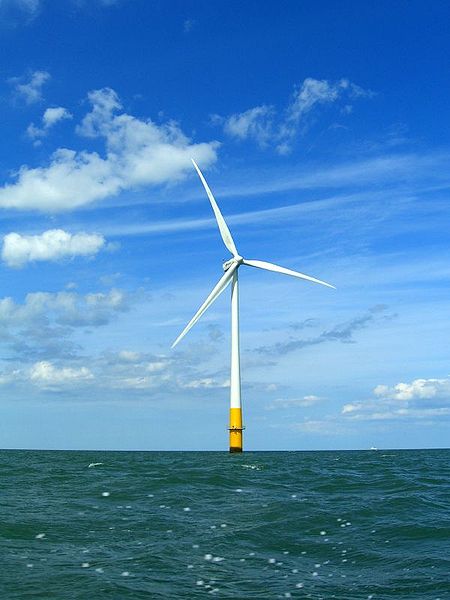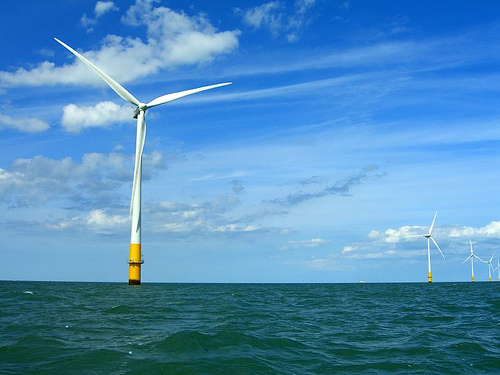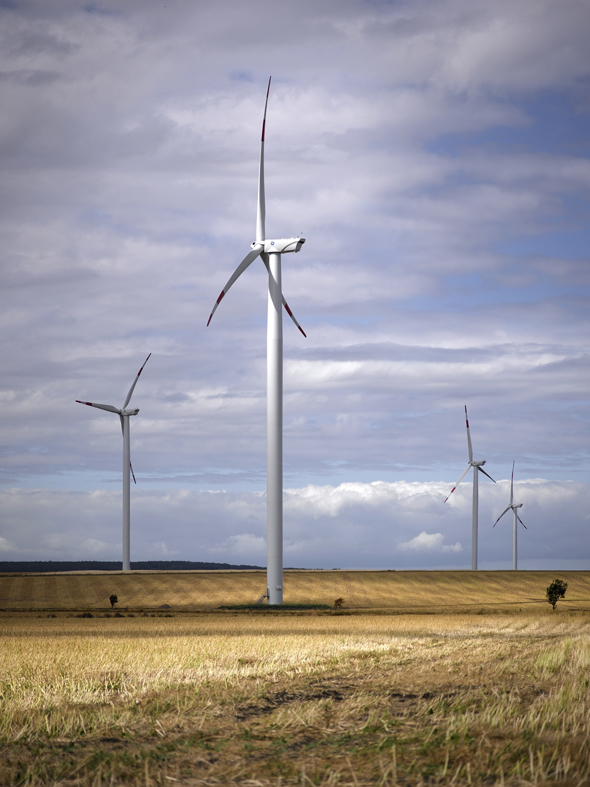
Photo by Phil Hollman, courtesy Wikimedia Commons
There’s enough offshore wind power to meet the energy needs of the entire human population. Now a new study proposes how an offshore wind grid could make that fickle power reliable.
Currently wind turbines provide power only as constant as the wind. But the winds could be made effectively steadier by choosing the best locations and then connecting them with a shared power line—even a single line. This according to U of Delaware and Stony Brook U researchers in an new (open access) paper in Proceedings of the National Academy of Sciences. The research, from the abstract:
“Based on 5 yr of wind data from 11 meteorological stations, distributed over a 2,500 km extent along the U.S. East Coast, power output for each hour at each site is calculated. Each individual wind power generation site exhibits the expected power ups and downs. But when we simulate a power line connecting them, called here the Atlantic Transmission Grid, the output from the entire set of generators rarely reaches either low or full power, and power changes slowly. Notably, during the 5-yr study period, the amount of power shifted up and down but never stopped. This finding is explained by examining in detail the high and low output periods, using reanalysis data to show the weather phenomena responsible for steady production and for the occasional periods of low power. We conclude with suggested institutions appropriate to create and manage the power system analyzed here.”
Lead author Willett Kempton of the U of Delaware’s College of Earth, Ocean, and Environment and director of its Center for Carbon-free Power Integration says:
“Our analysis shows that when transmission systems will carry power from renewable sources, such as wind, they should be designed to consider large-scale meteorology, including the prevailing movement of high- and low-pressure systems.”
The ideal configuration is a north-south transmission line, to fit with the storm track that shifts north or south along the east coast weekly and seasonally. At any one time a high or low pressure system is likely to be producing wind power somewhere along that line.
No wind turbines are presently located in US waters, though projects have been proposed off several Atlantic states.















